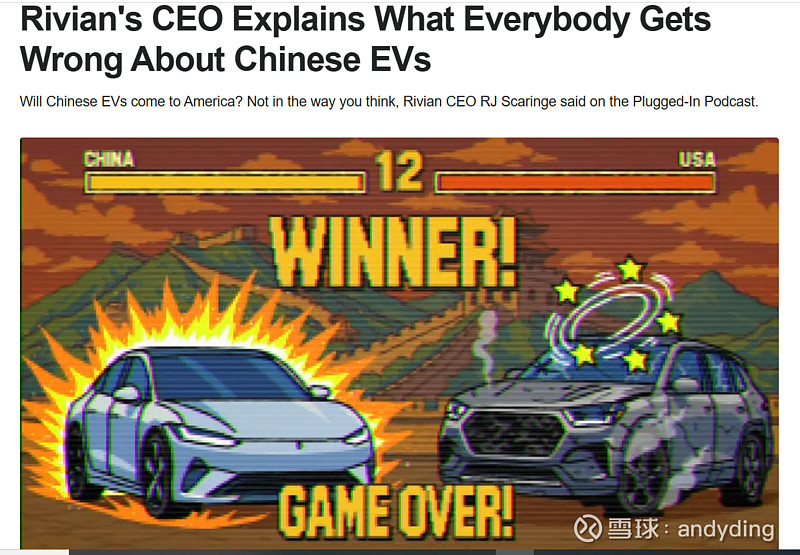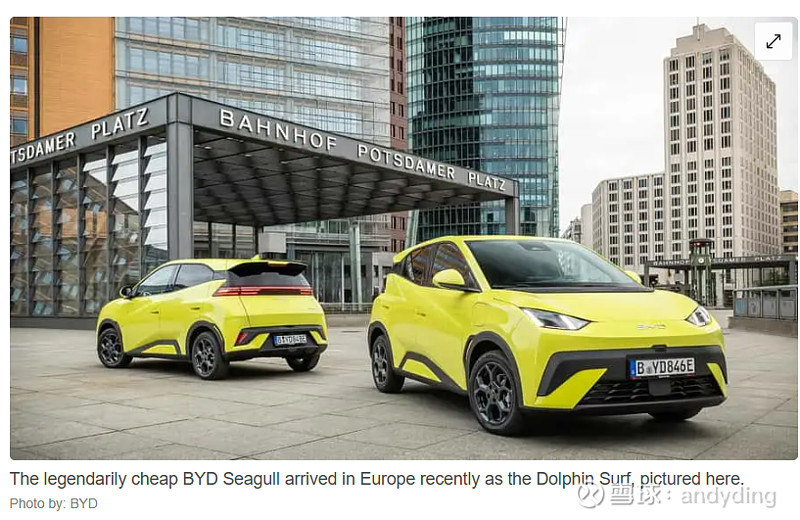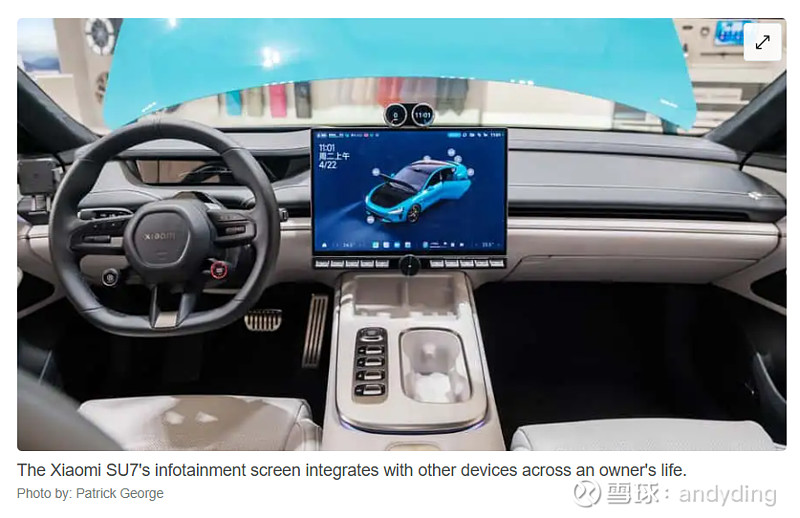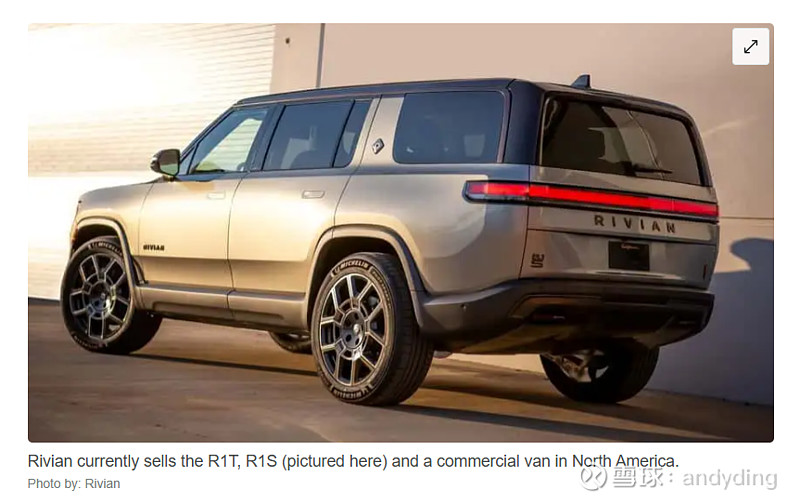$比亚迪(SZ002594)$ InsideEVs 报道《The Cars Are Actually Better: Rivian CEO On Chinese EVs》(实时更新于 2025 年 9 月 1 日)的总结与背景解读:
报道摘要
主旨观点:在近期播出的 Plugged-In Podcast 中,Rivian CEO RJ Scaringe 表示,中国的电动车技术优势正在超过只是“价格便宜”的刻板印象,他强调:“真正令人警醒的是,中国的汽车实际上技术更好。”
InsideEVs
降低成本并非唯一优势:RJ Scaringe 指出,中国低价 EV 的背后存在多种因素,如激烈的价格战、不同的安全标准、以及美欧高额的关税。他认为,西方不应仅聚焦成本,而应正视产品本身技术上的强势。
InsideEVs
深度解读
技术领先背后的逻辑
创新与集成能力:中国厂商在电池技术、整车集成和电控架构等方面发展迅速,涌现出例如 1200V 高压系统、四电机驱动、先进扭矩分配和智能悬架等先进技术(可参考 TechRadar 报道)。这种能力不仅提升性能,也促使车辆在技术规格上领先。
TechRadarWikipédia
成本只是表象
价格战与市场策略:虽然国内 EV 的低价确实吸引眼球,但背后也伴随高补贴和激烈竞争。移向海外后,价格不再是决定性优势。更加重要的是产品能够在质量、性能、用户体验上立足。
InsideEVsWikipédia
对 Rivian 和西方厂商的启示
转型路径:Scaringe 认为,美国厂商应聚焦于技术与产品力强化,而不仅是削价竞争。
战略回响:这与 RJ Scaringe 对于美国 EV 市场格局的其他观点一致,例如美国缺乏价格低于 5 万美元的多样化产品线,同时中国厂商在“技术堆栈和市场响应整合能力”方面具有先发优势。

China’s electric car industry is on track to swallow the world. But there’s one piece of the puzzle that often gets overblown when people discuss the ramifications of these cars potentially being sold in the United States someday.
网页链接{That $10,000 BYD you keep hearing about}? Here in the U.S., there’s zero chance it would be so astonishingly cheap, for better or worse. There are a few reasons for that.
EV prices have fallen in China partially due to a 网页链接{brutal price war} that is widely seen as unsustainable. Chinese cars sold in the U.S. would also need to meet different safety standards, which would hike up costs. (The same is true in Europe, where that ultra-cheap 网页链接{BYD Seagull} just 网页链接{went on sale} for around 23,000 euros, with some modifications.)

And then there’s the biggest factor: tariffs. Today, the U.S. 网页链接{imposes duties of over 100%} on Chinese-made cars in what amounts to an effective ban. The federal government’s line is that China’s lavish government subsidies have created far too much car-building capacity, and that it’s not America’s job to let artificially cheap imports steamroll into town.
It’s difficult to imagine those walls coming down in a major way anytime soon. And, for car companies that sell in America, it’s a lifesaver to avoid competing with cars that cost half or a third as much. But that doesn’t mean Ford, General Motors and the rest are out of the woods.
When 网页链接{we interviewed Rivian CEO RJ Scaringe} on the 网页链接{Plugged-In Podcast} a few weeks ago, I asked him about the threat of China’s EVs coming to America, and whether he and his rivals should be preparing for that.
“I think everyone should be planning for that and designing [their] technology stack around that,” he said. But the fixation on cost is all wrong, he argues.
“What’s alarming, if you’re looking at the whole industry, is that the technology is much better,” he said, referring to China’s EV industry. “If I was an existing manufacturer, I’d get less hung up on the cost and more focused on ‘the cars are actually better.’”
That's the key phrase here: "the cars are actually better." Whether China's automakers got ahead thanks to government investments or labor costs or leveraging Western IP doesn't matter now—it's a question of product vs. product.
While much of the Western auto world has been talking a big game about making “smartphones on wheels” for years, China is already there. My colleague Patrick George 网页链接{put succinctly what he saw at the Shanghai Auto Show this year}: “Tesla, but more and better.”
网页链接{}
网页链接{}
The cars have powerful, dazzling infotainment systems with features like karaoke and voice assistants. They have underlying architectures that often share more with the consumer electronics world than with clunky, old-school automotive systems. That means frequent and substantial software updates over time, similar to what Tesla and Rivian also do.
Chinese firms can also develop new models in months, rather than years. Some EVs can 网页链接{charge at incredibly high rates}. On top of all that, many outsiders have said they’re built just as solidly as German luxury cars.
The best poster child for the industry may be the 网页链接{Xiaomi SU7}, a sleek, Porsche-fighting premium sedan that Scaringe called “an impressively well-done vehicle”—high praise for Xiaomi’s first-ever car. It slots right into the electronics giant’s device ecosystem, allowing owners to, for example, switch on their car’s A/C from their Xiaomi smart speaker—or check their home security cameras right from their car’s screen.

Rivian’s founder is far from the only auto executive to sound the alarm here. 网页链接{Ford CEO Jim Farley} recently said China has “far superior in-vehicle technology” and that its car industry is “the most humbling thing I’ve ever seen.” Last month, 网页链接{Ford revealed plans for a new EV platform} and 网页链接{manufacturing method} explicitly aimed at battling China.
Scaringe went on to explain why it’s wise to remove cost from the China equation: Sure, Chinese cars might be sold in America someday, but it would never reach that nightmare scenario of a $10,000 or $15,000 BYD going head-to-head against a comparable $30,000 or $40,000 Rivian. The U.S. would never let that fly, he said.
“One of two things will happen: Either we'll put tariffs in place that make the cost equal, or we’ll allow Chinese manufacturers to build in the United States,” he said. “But in both cases, the cost will be essentially equal.”

Cars can get built so cheaply in China because of lower labor costs, much lower cost of capital and hefty government subsidies for car factories, he said. So those cost advantages largely evaporate once a firm is forced to make cars somewhere else. Moreover, if trade barriers were to magically disappear, then what would stop U.S. companies from leveraging those lower Chinese manufacturing costs, too?
“There’s no magic sauce happening in China that’s allowing the cars to be built easier,” he said. “You have a whole series of things that just lead to an overall lower cost base.”
All of that is why, Scaringe says, car companies should focus on beefing up their products and technology—not just worrying about cost.
“Who knows? In the fullness of time, I do think Chinese manufacturers may start building here. And then they’ll win not on cost, because the cost will be the same, or very nearly the same,” he said. “They’ll win on tech.”